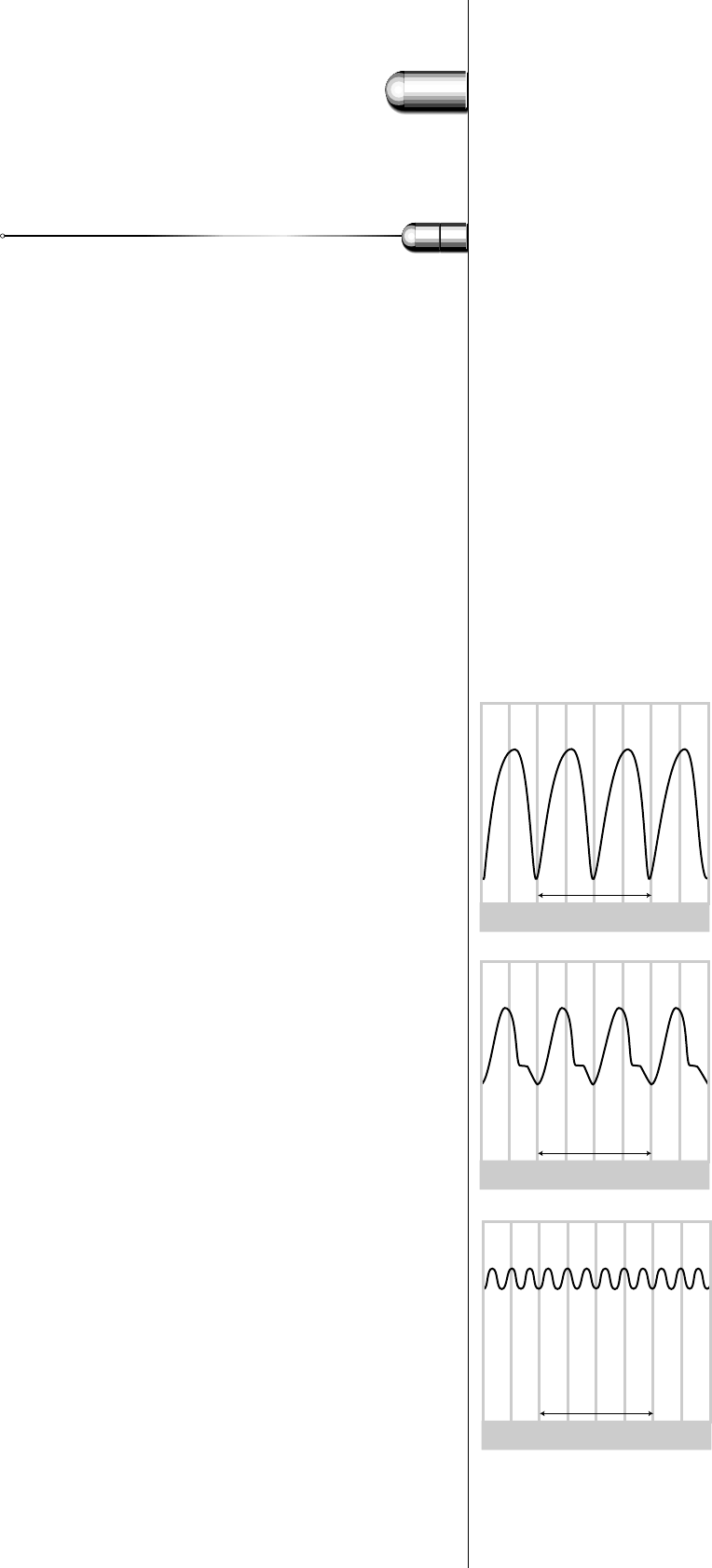
Stroboscopic effect and striations
For this subject, see also section Lamps, 3.10.
1.A fluorescent lamp operating on an alternating current will exhibit a
fluctuating light output, because the lamp extinguishes and restrikes
every half cycle of the supply.So this light ripple has a fixed (mains)
frequency and can cause the stroboscopic effect. It mainly depends
on the used phosphors of the lamp: the use of phosphors exhibiting
little or no afterglow may result in more pronounced fluctuations.
The use of inductive (Fig. 136a) and capacitive circuits together in a
duo or ‘lead-lag’ combination reduces the light ripple (Fig. 136b) In
an inductive circuit the lamp current will lag behind the supply
voltage by approx. 60º, while in the capacitive circuit the current will
be ahead of the voltage by approx.60º.This means that the light
output of a twin-lamp duo-circuit has two components mutually
shifted by 120º.
The best solution for preventing the stroboscopic effect is spreading
the lighting over the three phases of the supply (Fig. 136c), where the
minimum light output of one lamp coincides with high light outputs
of the two other lamps.
317
5
142
Fig. 136. Prevention of the stroboscopic
effect by using combined inductive and
capacitive circuits (‘lead-lag’ or duo-circuit)
and by spreading the lighting over the
three phases of the supply.
3.17 Stroboscopic effect and striations
˚˚ ˚˚˚
1 cycle
0
90
180
270
360
1 cycle
0
90
180
270
360
˚˚˚˚˚
1 cycle
0
90
180
270
360
˚˚˚˚˚
a)
b)
c)


















